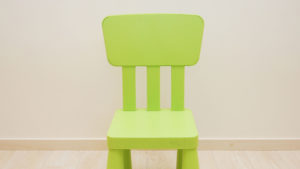Have you ever noticed when moving your child’s backpack, that it feels like it contains 40 pounds of rocks? Maybe you’ve noticed your child:
- Struggling to put it on
- Bending forward while carrying it
- Complaining of tingling or numbness
- Complaining of a headache and fatigue
Reducing the Load & Preventing Injuries
Backpacks that are too heavy can cause back, neck and shoulder pain, as well as poor posture. The American Academy of Pediatrics recommends a backpack weight no more than 5-10% of a child’s weight. For a 50-pound first grader, that’s five pounds.
There are some things you can do to help prevent injuries:
1. Start with an ergonomically correct backpack
- Be the appropriate size: Backpacks should not be wider than your child’s torso or hang more than four inches below the waist.
- Have padded, adjustable shoulder straps to help distribute weight on your child’s back without digging into their shoulders.
- Have padded back to protect against inside contents poking your child’s back.
- Have waist and chest straps to help distribute the weight of the backpack more evenly across your child’s back.
- Includes multiple compartments to help distribute weight more evenly.
- Includes reflective material so your child can be seen when walking to and from school.
- Avoid leather backpacks due to their increase weight.
2. Use the backpack correctly
- Use both straps on the shoulders when carrying the backpack. Using only one strap shifts the weight to one side, causing muscle pain and posture problems.
- Tighten shoulder straps so the backpack is fitted to your child’s back to avoid it dangling and causing spinal misalignment and pain.
- Encourage your child to use the chest and waist straps to adjust them to the load.
- The top of the backpack should be about two inches below the shoulder blades with the bottom resting in the curve of the lower back.
- The more space there is to fill, the more likely your child will fill it. Help your child determine what is necessary, and what they can leave at home or in their locker (if applicable).
- Load the heaviest items first, closest to the bottom and the center of the backpack. Make use of multiple compartments to distribute the load.
3. Tips for lightening the load
- Clean the backpack weekly and take out unneeded items.
- Store items in a locker when possible.
- Take only what is needed to school.
- Fill water bottles at school.
4. What about backpacks on wheels?
Rolling backpacks offer some benefits, but they should be used with caution. They are difficult to carry up and down stairs.
Pick up that backpack from time to time, and let your children know you’ve got their back!

Julie Heftie, Occupational Therapist
Health Expert
Julie Heftie is an Occupational Therapist with Bryan Health Pediatric Rehabilitation Services.








